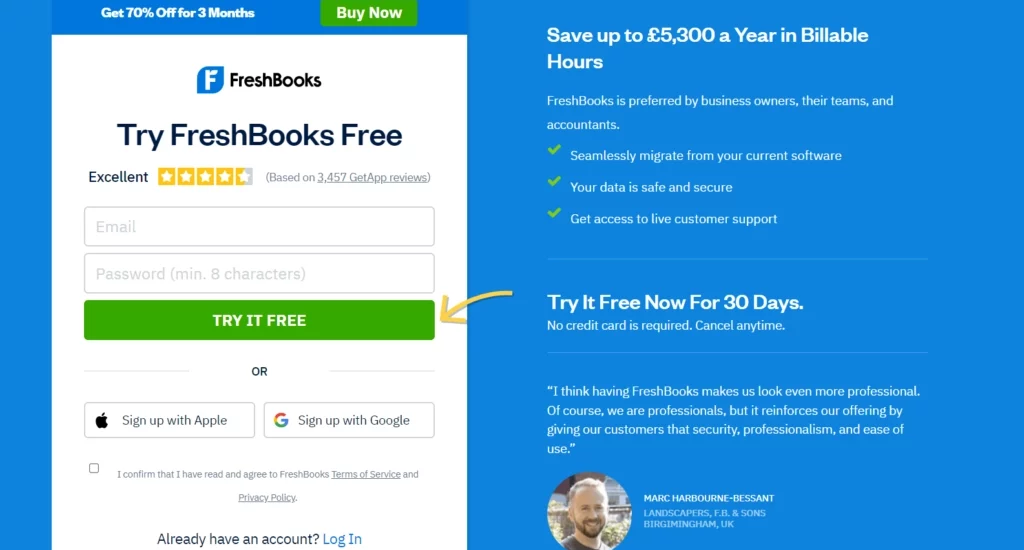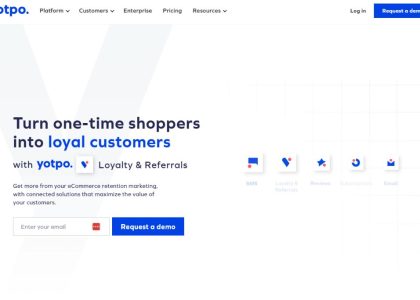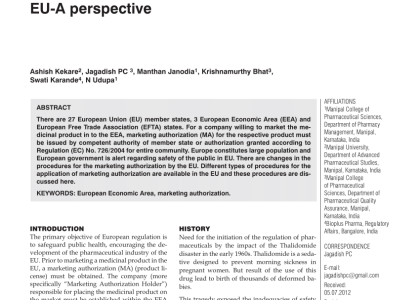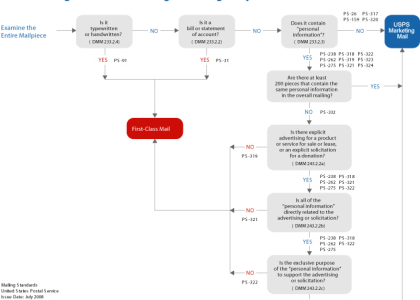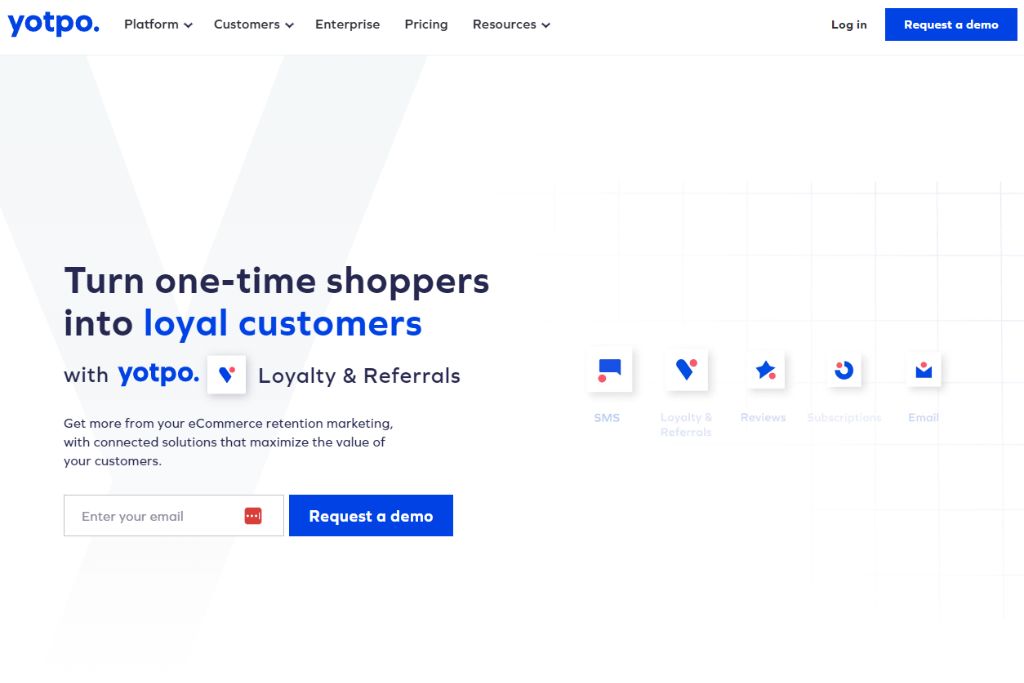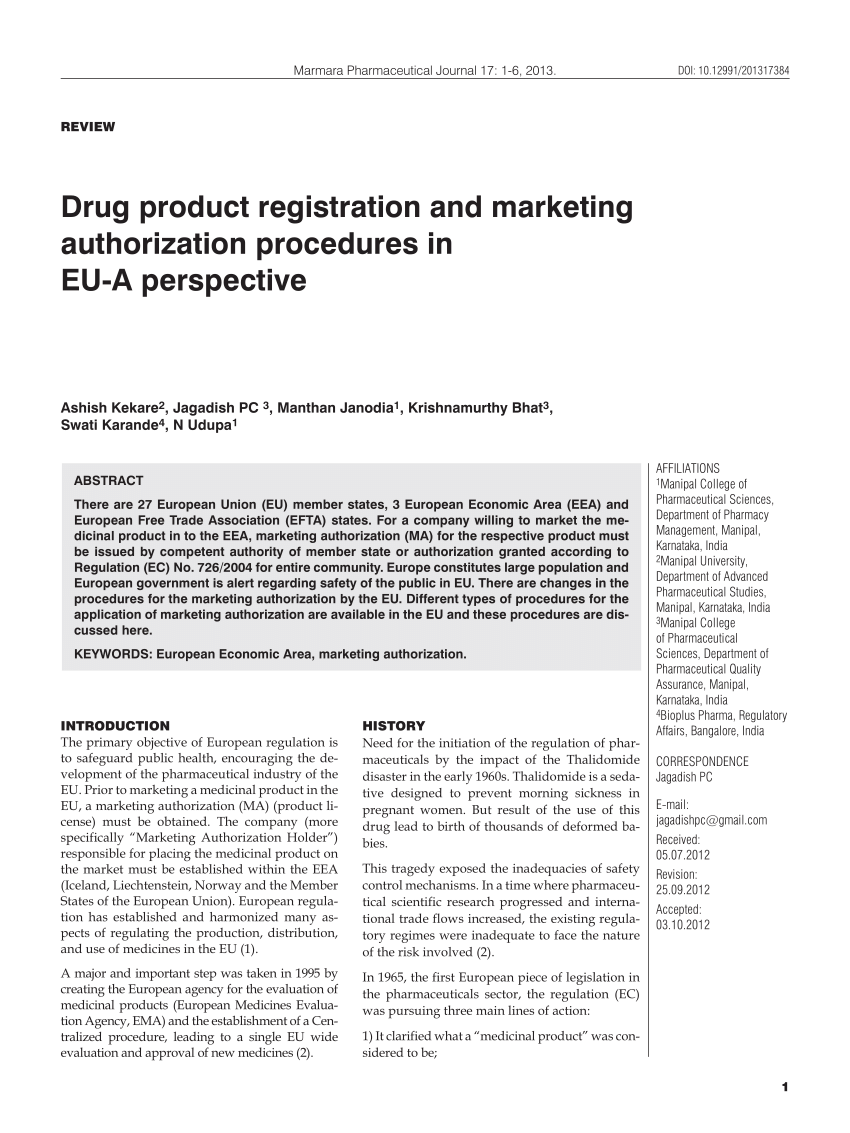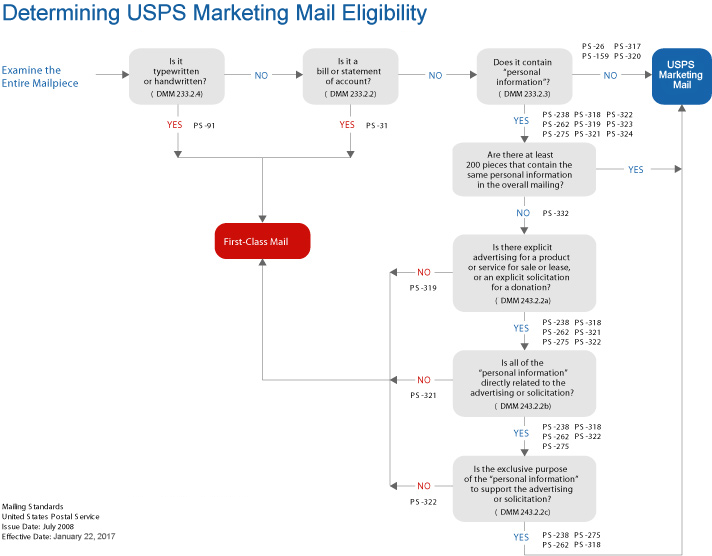To keep pace with the continually evolving marketing landscape, businesses need to grasp and apply efficient and cutting-edge strategies. An approach that is gaining significant traction in recent times is the concept of pull marketing, also known as attraction marketing. The technique is about drawing customers towards your business, as opposed to chasing them out with aggressive promotional tactics.
The crux of this concept thrives on creating compelling content that highlights your product or service’s unique attributes and the value it brings to potential customers. Such an approach not only seeks to engage your prospects effectively but also aims to convert them into advocates of your brand. Accordingly, this article will delve into the host of strategies encompassed within pull marketing that businesses can assimilate to resonate better with their target audience.
Besides, unlocking the understanding of this marketing method also warrants an appreciation of its wide-ranging benefits. Rather than just superficially boosting your customer numbers, this technique can foster loyal relationships between your business and customers, thereby underpinning long-term success and growth. Therefore, this discussion will not be complete without an exploration of the compelling benefits that attraction marketing brings to the table.
A Closer Look at the Power of Attraction-Based Marketing
Attraction-based marketing is a modern technique that leverages the values of your brand to magnetically attract your ideal consumer. This powerful methodology is built upon the understanding that customers will naturally gravitate towards brands that they can relate to and identify with. Rather than resorting to the traditional ‘push’ tactics of conventional marketing, it shifts the focus to ‘pull’ or ‘attraction’.
The Method Behind It
The underlying principle used in attraction marketing stipulates that instead of actively seeking consumers, marketers position their brand in a way that makes it attractive and compels potential buyers to seek the brand out. The efficacy of this style of marketing lies in its ability to establish strong connections and engendering trust with the customers.
Developing content that portrays a company’s strengths and unique propositions is fundamental to traction marketing. High-quality, authentic, and engaging content is utilized to communicate insight, education, and value to the audience, enticing them with benefits that surpass their expectations.
Benefiting from Attraction Marketing
Adopting a strategy centered around attraction marketing comes with manifold perks. Building genuine relationships is high on this list as this strategy champions understanding the customers, their needs, problems, and interests. Marketers can then position their offerings as solutions, thus fostering trust and loyalty.
- Increased brand awareness: Implementing an effective attraction marketing strategy will enhance visibility in the market, inevitably leading to increased brand awareness.
- Quality leads: As you draw your ideal customer to you, these leads are already pre-qualified, having already shown an interest in what you offer.
- Customer loyalty: As customers feel valued and understood, they are more likely to become loyal advocates of your brand.
Attraction marketing places the customers where they should be—in the center. This approach changes the traditional marketing dynamic and establishes a paradigm where individuals are not just customers, but partners in the business.
Tracing the Origins and Progression of Magnetic Marketing Strategies
The concept of ‘magnetic’ marketing has deep historical roots, going as far back as the days when merchants used their charming rhetoric to draw in customers. It took a significant transition towards the end of the 20th century with the advent of the internet, fundamentally changing the nature of customer-business interactions.
Before the internet, conventional marketing strategies focused on ‘pushing’ products or services onto potential customers. Marketers primarily employed interruptive tactics, such as television ads, billboards, and telemarketing calls, to garner consumers’ attention.
With the rise of the internet, a more ‘inbound’ approach gained prominence. ‘Attraction’ strategies emerged, aiming to ‘pull’ customers in by providing value before any purchase. These strategies created a two-way dialogue, allowing businesses to build meaningful relationships with their consumers. Businesses could now share valuable content, create community forums, and offer personalized experiences online. This gradual change was not just a shift in tactics but a wholly fresh perspective on what effective marketing could be.
Key Breakthroughs in the Progression of ‘Attraction Marketing’
- The development of Content Marketing: This strategy highlighted the importance of delivering educational and actionable content, rather than hard-selling products or services. It was founded on the logic of attracting customers by educating them, thereby influencing their purchasing decisions.
- Personalization and Relationship Marketing: Modern consumers expect personal and authentic interactions with their beloved brands. Marketers started focusing on personalization and relationship building, aiming to foster long-term customer loyalty.
- Email Marketing and Automation: Email marketing offers a direct line of communication to the customer. It allows businesses to send personalized, timely, and relevant messages. It has evolved over time to include automation, which saves time and increases efficiency.
In conclusion, the evolution of magnetic marketing strategies paints a picture of an industry responding to shifts in consumer behavior and expectations. Future developments will undoubtedly continue to push the boundaries, finding innovative ways to draw customers in and providing even more value.
Understanding the Fundamental Concepts of Marketing designed to Attract
Attraction marketing, as an approach differs from traditional marketing forms, hinged on its fundamental principles. Rather than just going after potential consumers, attraction marketing involves luring them.
Key Principles of Marketing that Appeals
In order to fully grasp the concept of marketing aimed at attracting, it is important to understand its core principles:
- Value Creation: This principle emphasizes the importance of creating and providing value to potential customers. Rather than focusing on selling your product, attraction marketing requires you to highlight how your product or service can address the needs and wants of your customers, and provide a solution to their problem.
- Education and Knowledge Sharing: In order to attract customers, you must be willing to share valuable information. This could be in the form of blogs, infographics, webinars, or informative social media posts that educate your customers about your offerings, relevant industry topics, or how they can gain maximum value from your product or service.
- Establishing Relationships: Building and nurturing meaningful relationships with potential customers is a key element of attraction marketing. Consumers are more likely to make a purchase from a brand they know and trust.
- Permission-based Contact: Unlike traditional marketing methods that involve unsolicited contact, attraction marketing ensures that communication with potential customers is permission-based. This means you’ll connect with customers who have expressed interest in your offerings and have given you permission to contact them, leading to higher conversion rates.
Employing principles like these allows one to craft compelling, customer-centric strategies – the cornerstone of effective attraction marketing. By focusing on consumer needs and establishing trust, businesses can pull in, convert and retain customers more efficiently.
Contrasting Attraction and Traditional Marketing Approaches
When comparing strategies of attraction marketing with traditional marketing, their differences come to the forefront. Attraction marketing, through its focus on customer relationship building and value promotion, marks a significant shift from the product and sales-centric approach of traditional marketing.
Attraction marketing, or magnet marketing, prioritizes the creation of content that generates interest and engages prospects. The primary goal is to create a magnetic effect, where rather than reaching out to the customers directly, businesses attract them by offering value and building relationships. This strategy aims to build credibility and position the brand as a trusted expert in the industry. The emphasis is on inbound marketing techniques, utilizing tools like blogs, podcasts, and social media to attract customers.
On the other hand, traditional marketing tends to adopt more outbound methods – pushing products or services towards customers rather than pulling them in. Traditional marketers generally rely on mass media advertising, direct mail, telemarketing, and cold calling to reach out to potential customers. This approach is product-centric, focusing on the featured benefits of the product or service, with little emphasis on relationship-building.
Summarizing Differences
- Customer Interaction: Attraction marketing engages customers by offering value, thereby promoting engagement and developing relationships. In contrast, traditional marketing places less emphasis on interaction, focusing more on product delivery.
- Approach: Attraction marketing is a pull strategy, which draws customers in. Traditional marketing is a push strategy, where products and services are pushed towards customers.
- Channels: Channels of communication also differentiate these marketing strategies. Attraction marketing utilizes digital media, including blogs, social media, and podcasts. Traditional marketing employs conventional media, such as print advertisements, television, and direct mail.
In conclusion, attraction and traditional marketing have distinct approaches towards engaging customers and promoting products or services. While the former concentrates on pulling in customers by providing valuable content and building relationships, the latter focuses on pushing products directly towards customers.
Embarking on the Journey of Becoming a Marketer that Attracts: Proficiencies and Prerequisites
Engaging in the art of magnetizing marketing necessitates the acquisition of certain skills and qualifications that increase one’s effectiveness in this domain. These abilities are indispensable assets in crafting strategies that captivate consumers and inevitably lead to higher sales conversions and brand loyalty.
Effective Communication Skills
Strong communication skills form the cornerstone of successful prompting marketing. This implies the ability to articulate brand narratives compellingly and persuasively across various marketing platforms – from social media posts to personalized emails. But communication is not a one-way street; an attraction marketer must also be an excellent listener to understand the needs, preferences, and pain points of potential customers, hence creating opportunities to offer a solution.
Proficiency in Digital Marketing Tools
Modern marketing is considerably reliant on digital platforms – consequently, proficiency in using digital marketing tools is a non-negotiable qualification to thrive in the field of attractive marketing. These tools, such as Customer Relationship Management (CRM) systems, analytics platforms, email marketing software, and social media dashboards, can help create, manage, and measure the effectiveness of your marketing endeavors.
In-depth Understanding of Consumer Behavior
The art of influencing consumers is not possible without a thorough understanding of consumer behavior. Hence, marketers need to possess a deep insight into how potential customers think, make purchasing decisions, and react to different marketing strategies. This understanding serves as a critical base for developing customer-centric marketing strategies.
-
- Problem-solving and Creativity
The field of marketing, which seeks to captivate consumers, is fraught with challenges that require creative solutions. This is particularly true when it comes to creating campaigns or content that stands out in an increasingly crowded market. Thus, marketers need to be skilled at improvising unique solutions and thinking “outside the box.”
-
- A knack for Relationship Building
Establishing strong relationships with customers significantly influences the success of attractive marketing strategies. People are more likely to do business with brands they know, like, and trust. Hence, marketers need to be experts at nurturing relationships, building trust, and establishing a strong brand reputation.
Creating a Strategy for Magnet Marketing: A Comprehensive, Sequential Plan
Initiating a magnet marketing strategy might seem demanding. However, we can simplify this process down to a few essential steps. By following these, you can create a powerful strategy that attracts your ideal customers, builds relationships, and ultimately drives conversion.
1. Understand Your Target Audience
The first critical step in creating an attraction or magnet marketing strategy is to comprehend your target audience. You must study their preferences, their needs, and how your product or service can provide a solution.
2. Develop Valuable Content
Once you understand your audience, the next step is to develop content that offers value to them. This could be blogs, videos, webinars, podcasts, or ebooks. The focus here is on information that educates, entertains, or solves problems for your audience.
3. Optimization of Multiple Marketing Channels
Utilize multiple marketing channels such as social media, email marketing, and SEO to distribute your valuable content. This will increase your visibility and reach, consequently attracting your target audience to your brand.
4. Implement a Lead Capture System
Employ a well-structured lead capture system to collect data of potential customers who interact with your content. You can use this information for later follow-ups or to nurture these leads through your sales funnel.
5. Nurturing and Conversion
Lastly, strengthen the relationship with your audience by continuing to provide high-value, targeted content. This will position your brand favorably in their minds and ultimately guide them towards becoming specific customers or clients.
In essence, developing an attraction marketing strategy is a journey of understanding your audience deeply, presenting them with compelling content, and winning their trust. Performed correctly, it can significantly amplify your business growth and brand visibility.
Exploring the Application of Magnetizing Marketing Tactics: A Look at Successful Enterprises
In the evolving world of business, a myriad of companies have reaped the benefits and observed growth through leveraging the power of attraction-based promotional strategies. Let’s delve into a few instances of how emulating a magnet in marketing has worked wonders for some businesses.
Apple Inc.: Creating a Brand Lifestyle
Possibly one of the most eminent examples of successfully employing magnetizing marketing, Apple Inc. has managed to create a brand that consumers eagerly associate with a certain lifestyle. By consistently delivering high-quality products, Apple has nurtured a strong level of trust and loyalty among its customers. What sets this tech giant apart is how it always appears to be one step ahead of consumer needs, attracting its target audience with innovative and sleek designs that resonate with their aspirations.
GoPro: Harnessing the Power of User-Generated Content
GoPro, a leading name in mobile cameras, has capitalized on the trend of user-generated content to effectively magnetize its target audience. By inspiring their customers to share awe-inspiring and adventurous moments captured on GoPro cameras, the company creates an emotional connection with potential buyers. This marketing strategy not only showcases the capabilities of GoPro cameras but also instills a sense of adventure and thrill, which magnetizes thrill-seekers towards the brand.
Sephora: Personalizing Customer Experience
Sephora, the globally-renowned cosmetics brand, has effectively used personalization strategies to attract and retain customers. Their Beauty Insider Program, which provides tailored product recommendations and access to exclusive events and rewards, is a testament to their customer-centric approach. This commitment to personalized customer experience sets Sephora apart and creates a magnetic pull for potential customers.
In conclusion, these companies have successfully put attraction-based promotional strategies into practice, thus creating a loyal customer base, enhancing brand image, and consequently driving sales. They serve as excellent models for other businesses looking to incorporate the pull of attraction into their marketing strategy.
Why You Should Consider the Use of Magnetic Advertising Techniques
Magnetic advertising is a game-changing strategy that will introduce an impressive array of benefits to your marketing efforts. Rather than pursuing potential customers with direct advertising, magnetic marketing works by drawing customers to your business with powerful, engaging content.
One of the most noticeable benefits is the establishment of trust and credibility. This technique allows you to demonstrate your industry expertise, which naturally attracts potential customers as they begin to trust and value your opinion.
- Increased brand visibility: When done right, this method of marketing amplifies brand visibility. Your informative and valuable content will attract more and more people, increasing your brand’s presence in the marketplace.
- Reduced customer acquisition cost: Traditional marketing methods often involve expensive campaigns and strategies to target potential customers. On the other hand, with magnetic marketing, the customer comes to you, eliminating the need for costly promotion methods.
- Higher conversion rates: Not only does magnetic marketing lower costs, but it also typically results in higher conversion rates. Because the customers who interact with your brand through attraction marketing have already displayed an initial interest in your brand or products, they’re more likely to make a purchase.
Adding to these, cultivating loyal customers is another substantial benefit. Magnetic advertising techniques are designed to foster interactions and relationships with customers that extend beyond a simple transaction. This leads to higher customer retention rates and more repeat business.
Clearly, with its focus on establishing your brand as a trusted authority in the industry and creating valuable relationships with potential customers, attraction marketing strategy presents a powerful approach to modern marketing. By implementing this strategy, businesses can enjoy better visibility, cost-effectiveness, and an overall more lucrative marketing experience.
Overcoming Obstacles in Generating Consumer Interest via Marketing
While the success of driving customer interest through marketing can transform into significant business growth, several challenges could create hurdles in its effective implementation. Grasping ways to surmount these obstacles can, however, help companies reap its numerous benefits.
One discernable adversity in this kind of marketing involves crafting content that genuinely captivates potential customers. With a saturated market filled with brands trying to capture customer attention, your content needs to stand out. Unique, engaging, and relevant content helps to remedy this situation. Not only does it ensure your brand leaves an impression, but it also builds trust, affirming you will provide the solution to your target audience’s needs or desires.
Another hurdle to note is the struggle to identify your target audience effectively. Businesses often battle with ensuring they are reaching the right audience—an issue which can drastically undermine your marketing efforts. Proper market research is a fundamental step towards overcoming this challenge, helping you understand the needs, behaviors, and desires of your potential consumers.
Generating Adequate Traffic and Leads
Driving sufficient traffic and leads is often one of the most experience-defining challenges in attraction marketing. While creating engaging content and finding the right audience is an excellent start, ensuring the created content gets ample visibility is another battle of its own. Search Engine Optimization (SEO) and strategic use of social media platforms can aid in overcoming this challenge, enabling your brand to be seen by a wider audience.
Lastly, there’s the difficulty of ensuring that customer attraction doesn’t come to a halt—a challenge resolved through the consistent delivery and update of content. Providing your customers with regular, relevant content will not only keep them engaged but also build a lasting relationship, ensuring customer loyalty long-term.
In dealing with the hurdles of attraction-based marketing, we find that the keys to success lie within content uniqueness, comprehensive market research, application of SEO and consistent content delivery. Navigating these challenges will help you generate long-lasting customer appeal for your brand, leading to business growth.
The Evolution and Anticipated Developments in Attraction Advertising
Attraction advertising, also known as pull marketing, is no longer an alternative marketing strategy; it has become the primary approach for successful businesses in various industries. As the business landscape continues to transform thanks to technological innovation, it is crucial to ponder upon the possible trajectories in the realm of attraction advertising.
Emerging Innovations in Attraction Advertising
Artificial Intelligence (AI) is inarguably a game changer in many industries and has an exciting role in revolutionizing attraction advertising. AI can analyze customer behavior and search patterns, using data from various platforms such as blogs and social networks, to help businesses gain insight about how their customer base thinks and what their interests are. Such data-driven approach can enhance personalization and segmentation, thus levelling up attraction advertising.
Moreover, the emergence of Augmented Reality (AR) and Virtual Reality (VR) will make the customer experience more immersive, thus establishing deeper emotional connections with customers and increasing the attractiveness of offerings. This technology can be particularly impactful for brands selling physical products or operating in the retail space.
- AR and VR can help users visualize the product in their own space before buying, hence reducing the uncertainty and enhancing the lure.
- Another upcoming trend is voice search. ComScore suggests that by 2022, 55% of households are expected to own smart speaker devices. Such technology can shift the dynamics of attraction advertising by enabling the business to optimize their content and offerings based on voice commands.
In conclusion, the future of attraction advertising is expected to be driven by sophisticated technologies, aiming to deliver more personalized and immersive experiences to customers. While these advancements present new opportunities, they also bring along certain challenges. Hence, organizations need to be proactive and adaptable in integrating these trends into their marketing strategies.
Embarking on a Journey in the World of Magnetizing Marketing
Carving a path in the discipline of magnetizing marketing is an opportunity to utilize your influencing prowess and innovation journey in the commercial industry. This compelling field is all about creating outstanding strategies that not only allure potential customers but also turn them into loyal fans of your brand.
Therefore, developing a magnetizing marketing career requires a unique blend of skills and talents. Foremost, a solid grasp of communication and interpersonal skills is pivotal. Additionally, understanding customers’ needs and preferences is important in order to tailor content that appeals to their interests and emotions—the core essence of attraction marketing.
The Steps to Success in Magnetizing Marketing
- Start with building proficiency in marketing fundamentals: Emphasize your academic training and practical experience to get a grip on the basics of marketing.
- Master the Art of Persuasion: Develop stellar interpersonal and customer dealing skills. Demonstrate empathy towards customer’s questions, needs, and feedback.
- Excellency in Social Media Tools: Ability to maneuver social media and content management tools is a pre-requisite in the age of digital marketing.
- Continuous Learning: Stay up-to-date with the latest trends, algorithms changes, and recent advancements in the marketing world.
By adhering to these steps, you can create a fruitful and thriving career in the domain of magnetizing marketing. However, remember that it’s crucial to ensure that what sets your approach apart from others is authenticity. Building a genuine bond with your audience is what makes them stay and return.
Overall, building a career in magnetizing marketing is both challenging and rewarding. It puts your innovation abilities to the test whilst molding a loyal customer base for businesses. Thus, each day can bring forth exciting new opportunities to influence and inspire.
In conclusion, individuals who have a knack for communication, insightfulness, and constant learning will find themselves perfectly suited for the stimulating world of magnetizing marketing.
Guidelines and Proven Methods for Success in Inbound Promotional Methods
In the quest for viable marketing strategies in today’s competitive business landscape, attraction marketing—also known as “inbound promotional methods”—has emerged as a particularly effective approach. This methodology involves positioning your brand in such a way that leads conveniently find their way to you. Here are some proven tips and best practices to maximize the benefits of this strategy.
1. Understand Your Target Demographic
Identifying your ideal prospects is a critical starting point. Understanding their needs, interests, and desires will allow you to align your offerings in a way that naturally resonates with them. Equipped with these insights, the inbound promotional content you create will have the organic pull you need.
2. Showcase Your Expertise
One of the most compelling elements of attraction marketing is the demonstration of authority and expertise in your niche. Share informative and educational content that will not only help your audience but position you as a trusted advisor. Content can range from blog posts, videos, webinars, to how-to guides.
3. Convert Leads into Sales
While receiving a high volume of leads is impressive, it can only be considered successful if they translate into actual sales. One of the best ways to do this is by setting up an email marketing funnel to nurture your leads. Automate the process of sending relevant information and offers that speak directly to their needs and interests.
4. Maintain Customer Relationships
The process doesn’t end once a purchase is made. Customer retention is a crucial component that can boost your bottom line. Keep engaging with your customers by offering valuable content or promotions, and always be ready to lend a helping hand.
Remember, practice makes perfect—consistency is key in inbound promotional methods. Keep learning, experimenting, and fine-tuning your strategy to reap the maximum benefits of attraction marketing.
FAQ: What is attraction marketing
How can you use attraction marketing in your marketing campaign to enhance lead generation?
To use attraction marketing in a marketing campaign, focus on providing valuable information and solutions to your audience’s needs, thus creating interest and generating new leads organically.
What is an example of attraction marketing in influencer marketing?
An example of attraction marketing in influencer marketing is when an influencer shares content about a product, showcasing its benefits and attracting followers who trust their recommendations.
Can you provide some attraction marketing tips for someone involved in network marketing?
Key attraction marketing tips for network marketing include creating engaging and informative content, establishing yourself as an authority in your niche, and using social media marketing to connect with a broader audience.
Why is attraction marketing considered a powerful marketing technique in online business?
Attraction marketing is considered a powerful marketing technique in online business because it focuses on attracting qualified leads through valuable content, building trust, and establishing long-term relationships.
How does attraction marketing help business owners in affiliate marketing grow their business?
Attraction marketing helps business owners in affiliate marketing grow their business by drawing in potential customers who are already interested in similar products or services, thereby increasing conversion rates.
What are some effective attraction marketing techniques for creating a successful attraction marketing campaign?
Effective attraction marketing techniques include offering free, valuable content, using storytelling in your marketing messages, engaging with your audience on social media, and consistently providing solutions to customer problems.
How can a business implement an attraction marketing strategy in their online marketing plan?
To implement an attraction marketing strategy in an online marketing plan, focus on creating content that educates and informs your audience, utilize SEO tactics, and engage actively with your audience on digital platforms.
What is the goal of attraction marketing, and how does it differ from traditional marketing methods?
The goal of attraction marketing is to attract potential customers by providing value and establishing expertise, unlike traditional marketing, which often focuses on pushing marketing messages out to a broad audience.
Can you explain how attraction marketing works in the world of digital marketing?
Attraction marketing works in the world of digital marketing by creating and sharing content that resonates with the target audience, thereby naturally attracting people who are interested in the business’s offerings.
How can a small business owner implement an attraction marketing strategy to attract more customers?
A small business owner can implement an attraction marketing strategy by consistently creating and sharing valuable content that addresses their audience’s needs, engaging with followers on social media, and using storytelling to connect with potential customers.
What is the attraction marketing formula and how does it work?
The attraction marketing formula involves creating valuable content that addresses the needs and interests of a target audience, thereby attracting potential customers to a brand or product organically.
How can a business implement attraction marketing to generate leads?
To implement attraction marketing, a business can focus on delivering informative and engaging content, engaging with audiences on social platforms, and providing solutions that address customer pain points to generate leads.
What are some effective methods to master attraction marketing?
To master attraction marketing, one should develop a deep understanding of the target audience, consistently produce valuable content, and use social media effectively to engage and attract customers.
How does attraction marketing differ from other types of marketing?
Unlike traditional forms of marketing that often involve direct selling, attraction marketing is a type of inbound marketing focused on creating content that naturally draws in an audience.
Can you provide examples of attraction marketing in action?
Examples of attraction marketing include a fitness coach sharing free workout tips on a blog to attract fitness enthusiasts, or a company offering free webinars on topics relevant to their products.
What is the principle of attraction marketing and why is it effective?
The principle of attraction marketing lies in building relationships by providing value first, making it effective as it establishes trust and credibility, which are key in converting leads into customers.
How can a business create an attraction marketing plan?
To create an attraction marketing plan, identify the interests and problems of your target audience, decide on the types of content that will provide value, and determine the best channels to distribute this content.
What kind of marketing attraction content should businesses focus on?
Businesses should focus on marketing attraction content that educates, entertains, or solves specific problems of the target audience, thus making the content valuable and shareable.
How does attraction marketing aim to grow your business?
Attraction marketing aims to grow your business by establishing you as a thought leader in your field, building trust with your audience, and gradually guiding them towards making a purchase decision.
What are some best attraction marketing tactics to use in organic marketing?
The best attraction marketing tactics in organic marketing include creating educational blog posts, engaging instructional videos, insightful podcasts, and active participation in social media discussions related to your industry.

